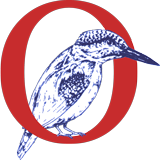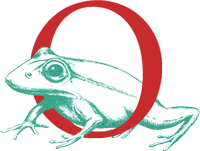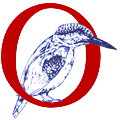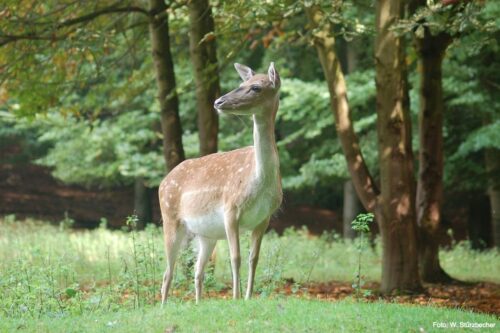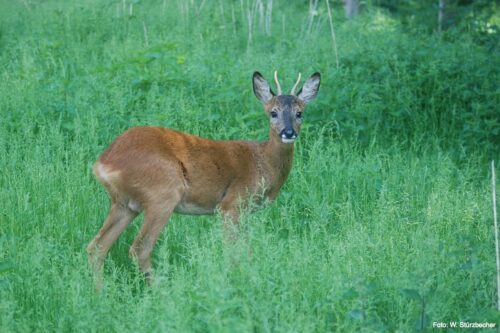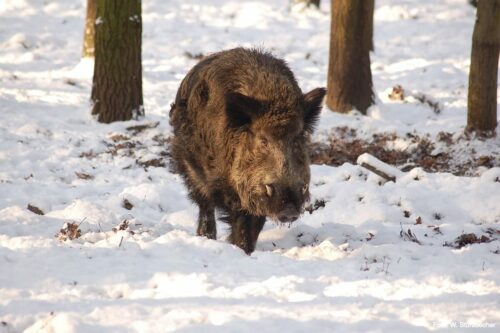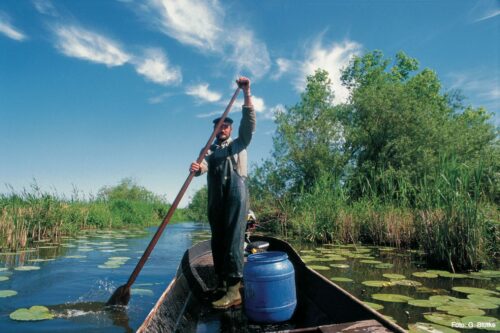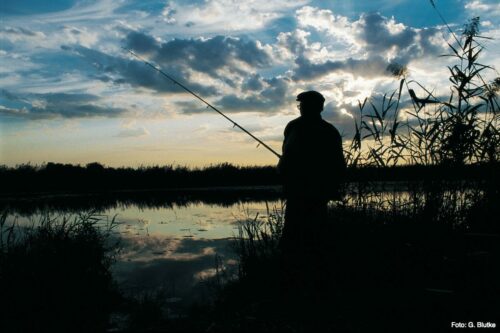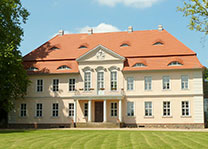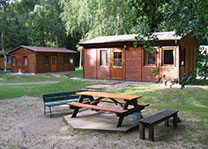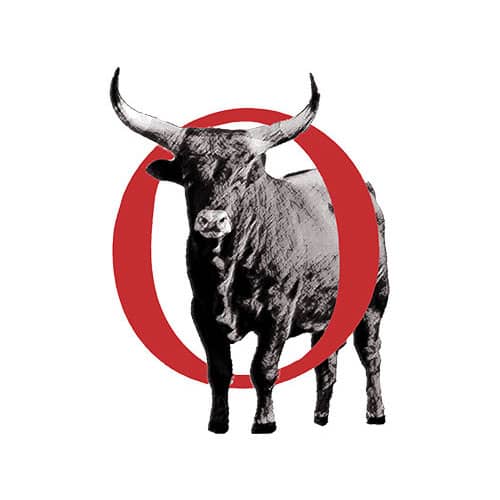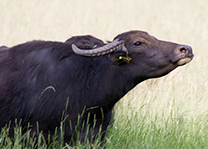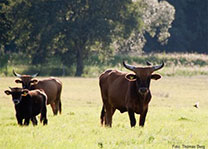Along with the amendment of the National Park Act in 2006, a fishing and hunting ordinance was initiated in which for the first time there are binding, unfortunately rather complicated, restrictive regulations for these types of use.
Hunt
- Fallow deer
- Roebuck
- Wild boar
Hunting — renamed in game population regulation — will largely be discontinued and in the polder essentially limited to wild boar to protect the flood protection systems. However, in an 80-meter-wide peripheral zone of the elongated but very narrow national park, hunting is still permitted to protect the adjacent agricultural areas.
The National Park Association does not consider this to be sensible. With the ongoing corporate land consolidation, it would be better to cut the parcels in such a way that the border does not lie on the edge of the forest, but rather a part of the field marrow surrounding the national park is attached to the parcels of the national park owners. Then, in the future, game skimming could take place outside, but on the edge of the national park, which is necessary in order to minimize game damage on the neighboring field marrow. The extensive hunting quiet in the national park forests designated or planned as a total reserve is already leading to the fact that a sometimes high concentration of hoofed game gathers there. That is why the hunting regulations allow one or two driven hunts even in designated total reserves. This is also useful and necessary in order to enable natural regeneration and a healthy deciduous forest, at least until the predators that actually live in the Lower Oder Valley have returned, such as wolf (Canis lupus), Bear (Ursus arctos) and lynx (Lynx lynx). The wolf has the edge and is spotted in the area again and again. Hunters report that you can already tell their presence in the game. The wolves come from the great forests east of the Oder. There has been no offspring in the Lower Oder Valley so far, but there is likely to be a lack of forest and seclusion on the German side. So far there is no trace of bears and lynxes, but there is of a golden jackal (Canis aureus).
The large predators would also be important for the ecological balance not only in the ungulates, but also in beavers and small carnivores. Unhunted, the latter pose an enormous threat to meadow breeders, which have already become rare, such as lapwing (Vanellus vanellus) or black-tailed godwit (Limosa limosa) represent. Research shows that the little predators like fox (Vulpes vulpes), Raccoon dog (Nyctereutes procyonoides), Mink (Neovison vison) or raccoon (Procyon lotor) of large predators like the wolf (Canis lupus) can be kept in check. As long as these cannot develop their balancing effect, the hunt for these small carnivores is still sensible and necessary for bird protection reasons, even if the hunting regulations of the national park do not currently allow this.
As is well known, the right to hunt is tied to the property. On this basis, the National Park Association already has four own hunting districts, two are leased, two are managed by the National Park Association itself and annually issues inspection certificates to local hunters. After the land reorganization has been completed, the National Park Association will have more private hunts available. Hunters who then want to perform their function in natural equilibrium are sought for the inspection certificates that are then to be issued. In the national park association’s own hunts, the focus will be on nature conservation, the hunters should only replace the missing large carnivores. Interventions in nature should be as minimal as possible. Driven and driven hunts will play a major role. The individual hunt is concentrated on the forest edges on the edge of the national park, but intensified there if necessary in order to avoid damage to the game on the neighboring field marrow. In any case, the rifle and rifle are only fired unleaded.
Fishing & angling
Angling and fishing restrictions are even more complicated. There is a far-reaching ban on night and spring fishing in the fishing regulations of the state of Brandenburg, but with exceptions that are difficult to control. Above all, off-road enforcement seems to be the problem in the future. The nature watch of the state of Brandenburg is hardly able to do this with its current personnel strength.
While professional fishing, a traditional craft, only occurs for a limited time and place in the Lower Oder Valley, anglers, even if they behave in a nature-friendly manner, avoid unnecessary disturbances and do not leave any rubbish behind, in a national park, especially in its wilderness areas, make a considerable contribution Disruptive factor. Here it is important to find and implement reasonable, sustainable and, above all, controllable compromises. Fishing on the groynes of the Oder foothills, which is to be developed into a wilderness zone, is a major problem for nature conservation. Fortunately, the open borders also allow Polish anglers with their boats to arrive and depart quickly. Against this background, controls are not easy and are rarely carried out. Improvements by the regulatory authorities are urgently needed here if one does not want to lose sight of the national park’s protection concept.
However, fishing is also an important leisure activity, especially for older people. For some time now, however, they have not been allowed to drive their cars directly to the fishing spot without a certain degree of disability. But only really enthusiastic anglers travel by bike. In the opinion of the National Park Association, fishing should also be possible in the national park in the future, but only on specially designated fishing routes that are easy to reach and do not involve any additional interference with nature, for example on bridges and inlet structures.
- Fishermen at work
- Fishing idyll
